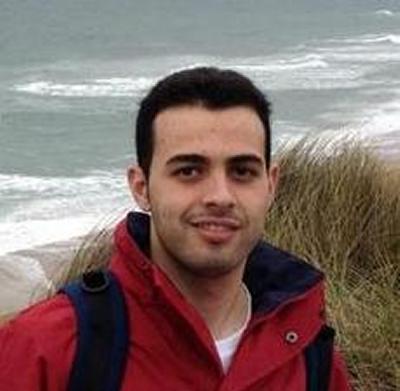Hachem Kassem
PhD entitled Vertical structures of turbulence in the benthic boundary layer as related to suspended sediments

Hi, I'm Hachem Kassem and I studied within Southampton Marine and Maritime Institute at the University of Southampton.
I am an MPhil/PhD (Ocean and Earth Science) student based at the National Oceanography Centre, Southampton. I am Lebanese, and I hold a BEng (Hons) in Civil Engineering and an MSc in Engineering in the Coastal Environment.
Understanding the physical processes at work within the boundary layer is the essence of modelling sediment transport, which, in turn, has profound implications for predicting the morphological evolution of coastal environments (e.g. erosion/ deposition) and hence for engineering applications (e.g. dredging, beach nourishment, harbour infilling, etc.). Suspended sediment transport also dictates the biogeochemistry in coastal settings (e.g. ecology, metal stirring, nutrients exchange, contaminant transport, carbon sequestration, etc.). Finally, accurate understanding of sediment transport is key to predicting coastal change in relation to future changing sea level and storminess associated with climate change.
My Phd aims to provide a better model for describing the vertical profile of suspended sediments within the water column, taking into account the turbulence processes induced by fluid motion (e.g. currents, waves, etc.) over the seabed. The model currently used by sediment dynamicists and hydraulic modellers, known as the Rouse Profile, makes a set of assumptions that are an over-simplification of reality, or are inherently invalid for a range of different flow conditions and bed configurations. It is hoped that by studying the vertical structure of turbulence in the region of flow affected by friction from the seabed, a better formulation can be developed; and one which accounts for the feedback imparted by the suspended particles on flow itself, a major shortcoming of the current model.
This PhD is a jointly funded scholarship awarded by: Graduate School at National Oceanography Centre, Southampton; Faculty of Engineering and the Environment; University of Southampton; Southampton Marine and Maritime Institute; and HR Wallingford. My supervisors are Dr. Charlie Thompson (OES), Prof Carl Amos (OES), Prof. Robert Nicholls (CENV), and Prof. Ian Townend (HR Wallingford).